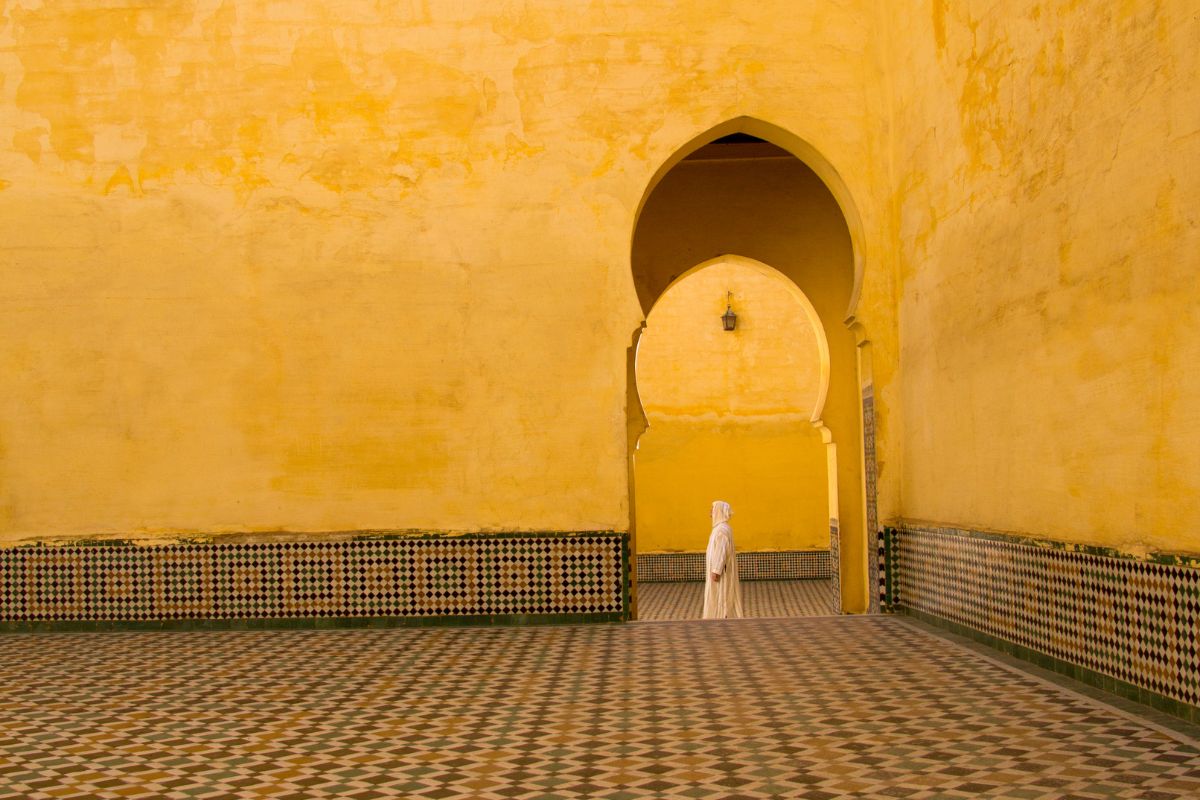In this article, we will explore the world of Islamic architecture in Morocco. With its rich history and cultural heritage, Morocco boasts some of the most stunning examples of Islamic architecture globally. From intricate geometric patterns to soaring minarets that grace the skyline, Morocco’s mosques and medersas (Islamic schools) are not mere places of worship; they are architectural masterpieces reflecting centuries of artistic and architectural evolution.
Islamic Architecture in Morocco: Masterpieces of Art and Faith
The Significance of Mosques and Medersas in Moroccan Culture
Islamic architecture in Morocco plays a crucial role in the country’s cultural and religious identity. Mosques are not only places of worship but also serve as centers for education, community gatherings, and social activities. In Moroccan cities and towns, the call to prayer, or Adhan, echoes from the minarets, signaling the five daily prayer times and connecting the faithful to their religious duties.
Medersas, on the other hand, is an Islamic school where students study the Quran, Islamic jurisprudence, and other religious subjects. These institutions have been instrumental in preserving Islamic knowledge and fostering a deep understanding of the religion among students.
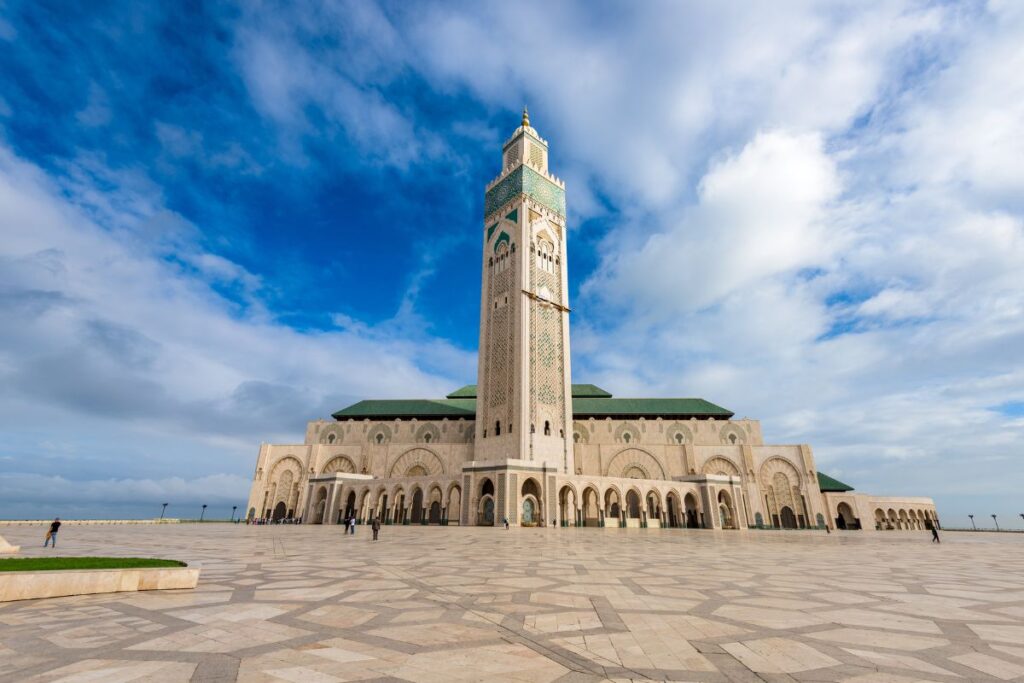
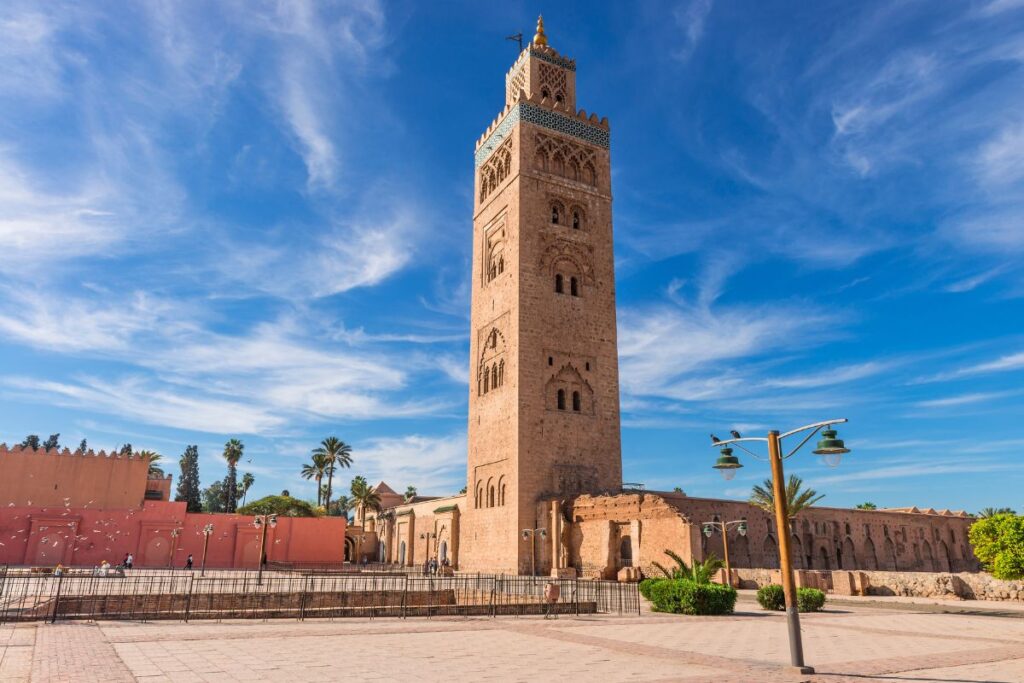
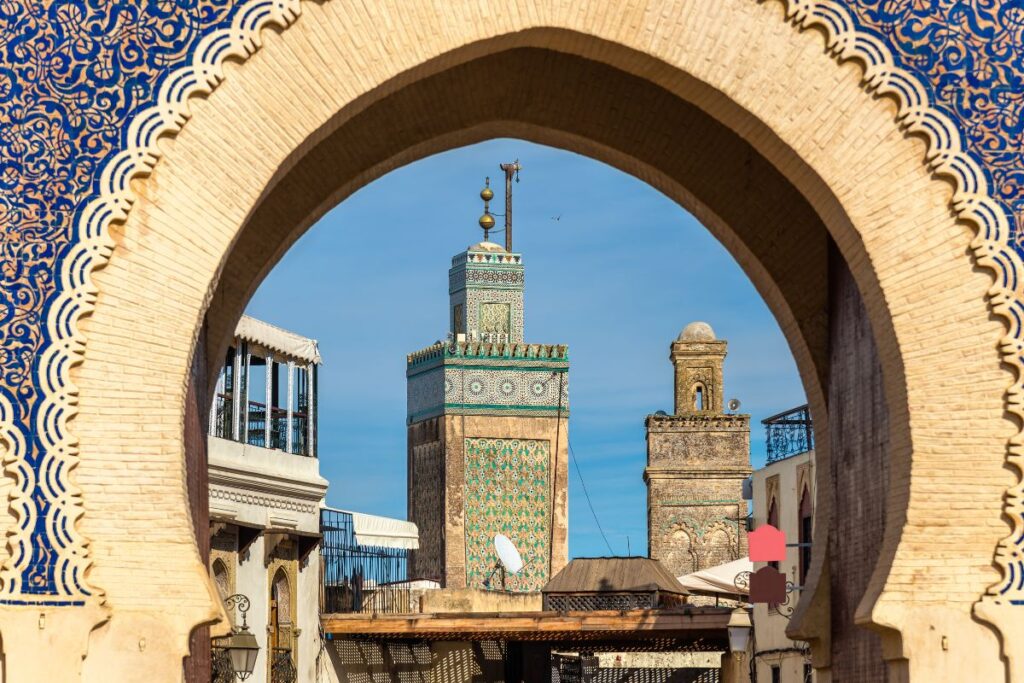
Architectural Elements of Moroccan Mosques
Moroccan mosques exhibit a unique blend of architectural elements influenced by various Islamic dynasties that have ruled the region over the centuries. Some of the distinctive features of Moroccan mosques include:
- Minarets: The minaret is a prominent feature of Moroccan mosques. These tall, slender towers are used to call the faithful to prayer. Moroccan minarets often have decorative tile work, intricate plaster carvings, and ornate calligraphy.
- Courtyards: Most Moroccan mosques have spacious courtyards, known as sahns, where worshippers can gather for communal prayers. These courtyards are usually surrounded by a colonnade and adorned with fountains or ablution areas.
- Mihrabs: The mihrab is a niche in the mosque’s qibla wall, indicating the direction of Mecca, which Muslims face during their prayers. Moroccan mihrabs are renowned for their intricate tile work and stucco ornamentation.
- Zellige Tilework: Zellige is a distinctive form of tilework that consists of geometric patterns and calligraphy. It is commonly used to decorate mosque facades, domes, and interiors.
- Horseshoe Arches: Influenced by the Al-Andalus architectural style, Moroccan mosques often feature horseshoe-shaped arches, adding an elegant and unique touch to their design.
Iconic Mosques in Morocco
- Hassan II Mosque (Casablanca): One of the largest mosques in the world, the Hassan II Mosque in Casablanca is a modern architectural marvel. Its minaret stands at 210 meters, making it the tallest religious structure globally. The mosque is known for its stunning oceanfront location and intricate tilework.
- Koutoubia Mosque (Marrakech): The Koutoubia Mosque in Marrakech is an iconic symbol of the city. Its 77-meter minaret can be seen from various parts of Marrakech. The mosque’s architecture features elegant horseshoe arches and beautiful gardens.
- University of Al Quaraouiyine (Fez): While not a mosque, the University of Al Quaraouiyine in Fez is one of the oldest existing educational institutions globally. Its stunning courtyard and historic significance make it a must-visit site for those interested in Islamic architecture and history.
- Moulay Ismail Mosque (Meknes): Located in the imperial city of Meknes, the Moulay Ismail Mosque showcases exquisite tilework and intricate geometric patterns. It is a testament to the architectural grandeur of the city.
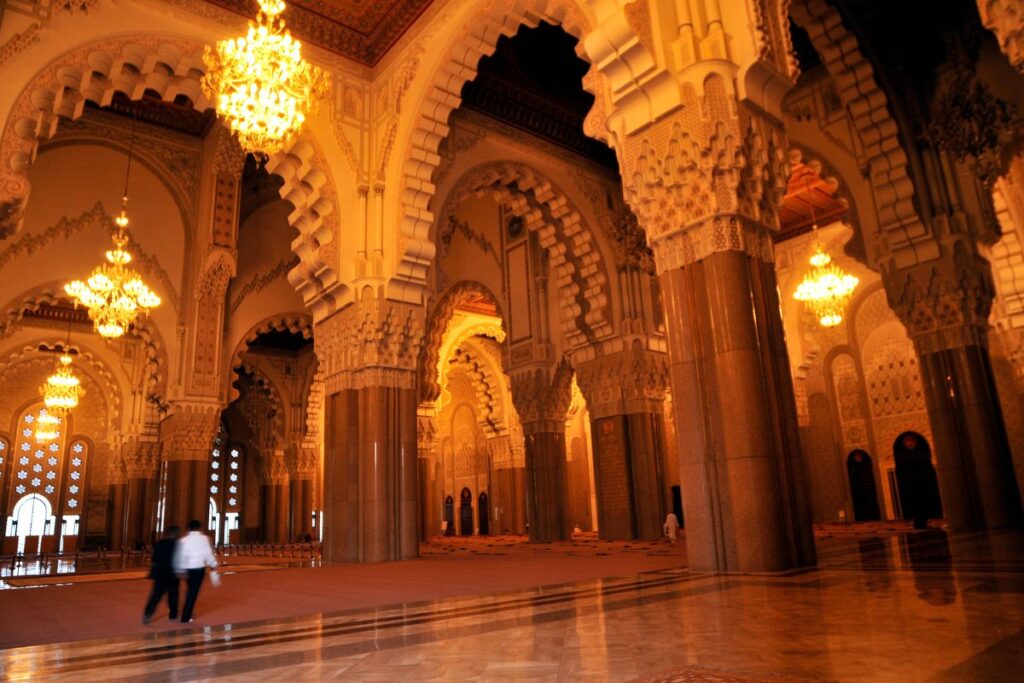
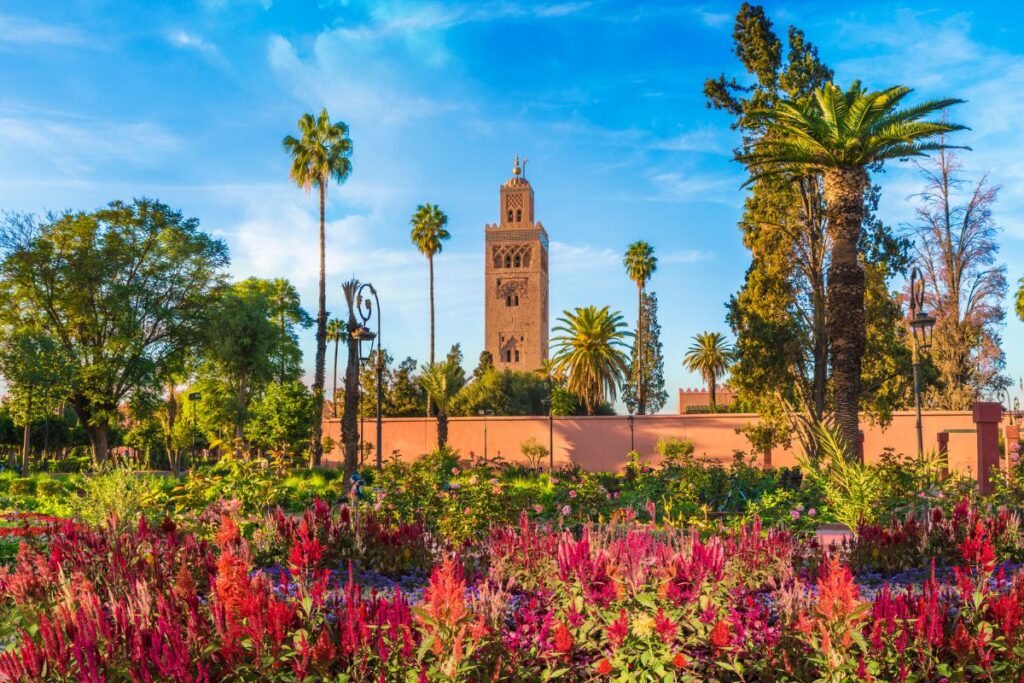
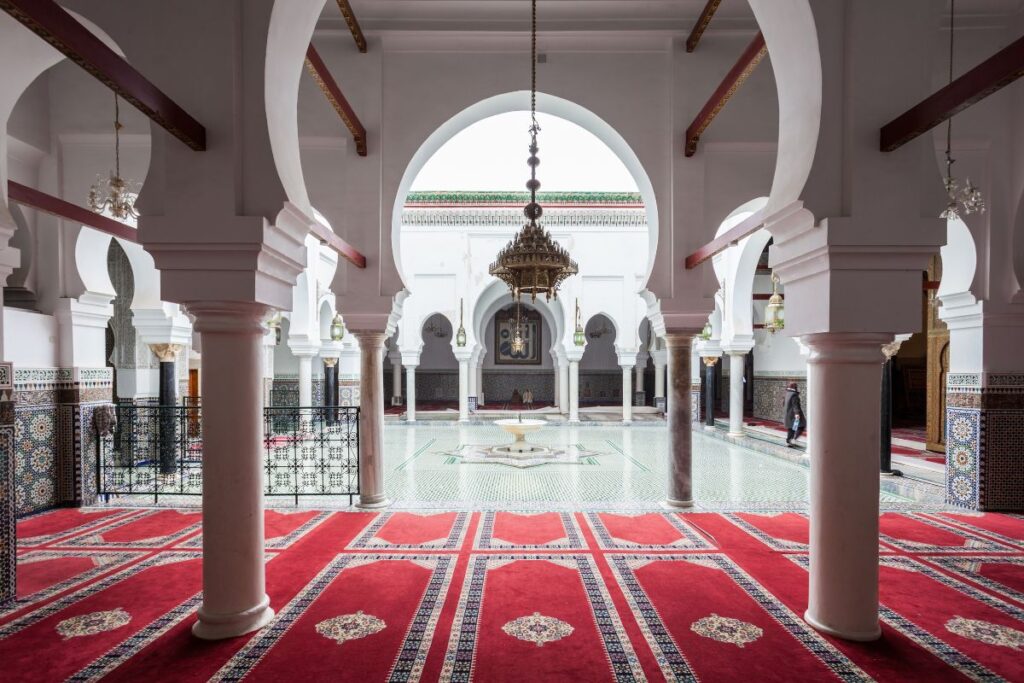
Medersas: Centers of Learning and Beauty
In addition to mosques, Morocco’s medersas are architectural gems worth exploring. These Islamic schools often feature stunning courtyards adorned with fountains and intricate tilework. One notable example is the Bou Inania Medersa in Fez, known for its detailed stucco work and woodcarvings.
Preservation of Islamic Architecture
The preservation of Morocco’s Islamic architecture is of great importance to the country. Efforts are continually made to restore and maintain these historic structures, ensuring that future generations can appreciate the beauty and significance of Moroccan mosques and medersas.
Morocco’s Islamic architecture, with its exquisite mosques and medersas, is a testament to the country’s rich cultural and religious heritage. These architectural masterpieces not only serve as places of worship and learning but also stand as symbols of Morocco’s artistic and historical contributions to the Islamic world. When visiting Morocco, exploring these architectural wonders is a journey through time and culture, offering a deeper understanding of the nation’s identity and traditions.
